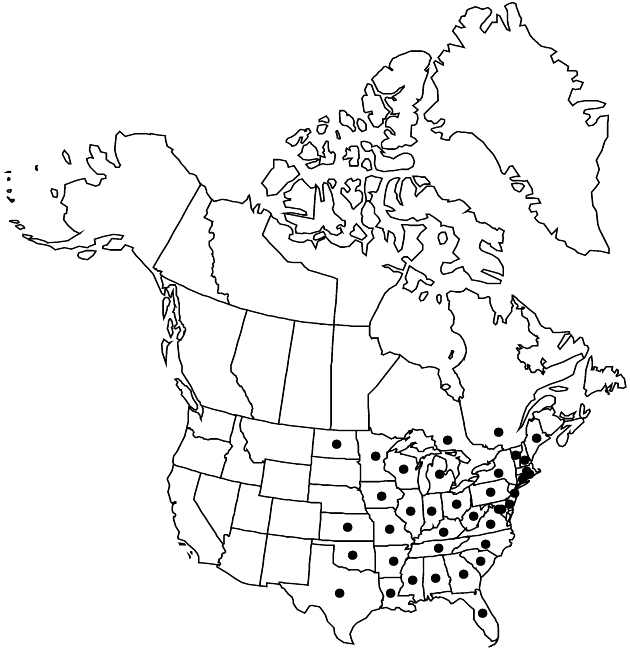Difference between revisions of "Helianthus strumosus"
Sp. Pl. 2: 905. 1753.
FNA>Volume Importer |
imported>Volume Importer |
||
| (6 intermediate revisions by 2 users not shown) | |||
| Line 8: | Line 8: | ||
}} | }} | ||
|common_names=Rough sunflower;hélianthe scrofuleux | |common_names=Rough sunflower;hélianthe scrofuleux | ||
| + | |special_status={{Treatment/ID/Special_status | ||
| + | |code=E | ||
| + | |label=Endemic | ||
| + | }} | ||
|basionyms= | |basionyms= | ||
|synonyms={{Treatment/ID/Synonym | |synonyms={{Treatment/ID/Synonym | ||
|name=Helianthus montanus | |name=Helianthus montanus | ||
|authority=E. Watson | |authority=E. Watson | ||
| − | }}{{Treatment/ID/Synonym | + | |rank=species |
| + | }} {{Treatment/ID/Synonym | ||
|name=Helianthus saxicola | |name=Helianthus saxicola | ||
|authority=Small | |authority=Small | ||
| + | |rank=species | ||
}} | }} | ||
|hierarchy=Asteraceae;Asteraceae tribe Heliantheae;Asteraceae (tribe Heliantheae) subtribe Helianthinae;Helianthus;Helianthus strumosus | |hierarchy=Asteraceae;Asteraceae tribe Heliantheae;Asteraceae (tribe Heliantheae) subtribe Helianthinae;Helianthus;Helianthus strumosus | ||
| Line 30: | Line 36: | ||
|elevation=0–1500 m | |elevation=0–1500 m | ||
|distribution=Ont.;Que.;Ala.;Ark.;Conn.;Del.;D.C.;Fla.;Ga.;Ill.;Ind.;Iowa;Kans.;Ky.;La.;Maine;Md.;Mass.;Mich.;Minn.;Miss.;Mo.;N.H.;N.J.;N.Y.;N.C.;N.Dak.;Ohio;Okla.;Pa.;R.I.;S.C.;Tenn.;Tex.;Vt.;Va.;W.Va.;Wis. | |distribution=Ont.;Que.;Ala.;Ark.;Conn.;Del.;D.C.;Fla.;Ga.;Ill.;Ind.;Iowa;Kans.;Ky.;La.;Maine;Md.;Mass.;Mich.;Minn.;Miss.;Mo.;N.H.;N.J.;N.Y.;N.C.;N.Dak.;Ohio;Okla.;Pa.;R.I.;S.C.;Tenn.;Tex.;Vt.;Va.;W.Va.;Wis. | ||
| − | |discussion=<p>Helianthus strumosus is variable, particularly for leaf shape and indument; sufficient study has not been undertaken to evaluate whether regional forms deserve taxonomic recognition. Hybridization with other polyploids, including H. decapetalus, H. hirsutus, and H. tuberosus, further complicates the situation. It differs from H. tuberosus in having glabrous (or glabrate) stems and in lacking tubers.</p> | + | |discussion=<p><i>Helianthus strumosus</i> is variable, particularly for leaf shape and indument; sufficient study has not been undertaken to evaluate whether regional forms deserve taxonomic recognition. Hybridization with other polyploids, including <i>H. decapetalus</i>, <i>H. hirsutus</i>, and <i>H. tuberosus</i>, further complicates the situation. It differs from <i>H. tuberosus</i> in having glabrous (or glabrate) stems and in lacking tubers.</p> |
|tables= | |tables= | ||
|references= | |references= | ||
| Line 39: | Line 45: | ||
-->{{#Taxon: | -->{{#Taxon: | ||
name=Helianthus strumosus | name=Helianthus strumosus | ||
| − | |||
|authority=Linnaeus | |authority=Linnaeus | ||
|rank=species | |rank=species | ||
| Line 53: | Line 58: | ||
|publication title=Sp. Pl. | |publication title=Sp. Pl. | ||
|publication year=1753 | |publication year=1753 | ||
| − | |special status= | + | |special status=Endemic |
| − | |source xml=https:// | + | |source xml=https://bitbucket.org/aafc-mbb/fna-data-curation/src/2e0870ddd59836b60bcf96646a41e87ea5a5943a/coarse_grained_fna_xml/V19-20-21/V21_380.xml |
|tribe=Asteraceae tribe Heliantheae | |tribe=Asteraceae tribe Heliantheae | ||
|subtribe=Asteraceae (tribe Heliantheae) subtribe Helianthinae | |subtribe=Asteraceae (tribe Heliantheae) subtribe Helianthinae | ||
Latest revision as of 20:11, 5 November 2020
Perennials, 100–200 cm (rhizomatous). Stems erect, glabrous or glabrate. Leaves cauline; mostly opposite, sometimes alternate (distal); petioles 1–3 cm; blades (light to dark green, 3-nerved distal to bases) lanceolate to lance-ovate or ovate, 7–18 × 2–10 cm, bases subcordate to ± cuneate, margins entire to ± serrate, abaxial faces glabrous or tomentulose, usually densely gland-dotted. Heads 3–15. Peduncles 1–9 cm. Involucres cylindric to hemispheric, 8–20 mm diam. Phyllaries 18–25 (erect, loose, or squarrose), lanceolate, 5.5–10 × 1.5–3 mm (equaling or slightly surpassing discs), (margins usually ciliate) apices acute to acuminate, abaxial faces glabrous or hispidulous, usually not gland-dotted. Paleae 5.3–6.5 mm, 3-toothed. Ray florets 10–20; laminae ca. 12–20(–30) mm. Disc florets 35+; corollas 5.5–6.5 mm, lobes yellow; anthers dark, appendages dark or reddish brown. Cypselae 4–5.5 mm, glabrate; pappi of 2 aristate scales (1–)2–2.5 mm. 2n = 68, 102.
Phenology: Flowering late summer–fall.
Habitat: Woods, roadsides, prairies
Elevation: 0–1500 m
Distribution

Ont., Que., Ala., Ark., Conn., Del., D.C., Fla., Ga., Ill., Ind., Iowa, Kans., Ky., La., Maine, Md., Mass., Mich., Minn., Miss., Mo., N.H., N.J., N.Y., N.C., N.Dak., Ohio, Okla., Pa., R.I., S.C., Tenn., Tex., Vt., Va., W.Va., Wis.
Discussion
Helianthus strumosus is variable, particularly for leaf shape and indument; sufficient study has not been undertaken to evaluate whether regional forms deserve taxonomic recognition. Hybridization with other polyploids, including H. decapetalus, H. hirsutus, and H. tuberosus, further complicates the situation. It differs from H. tuberosus in having glabrous (or glabrate) stems and in lacking tubers.
Selected References
None.